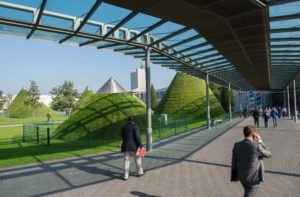EMO report. What about the tubes’ sector?

What to say about the EMO? Even in the Hanover edition, the judgment remains suspended, largely interlocutory. Beyond the very positive numbers expressed by the organization, both in terms of companies present and visitors, it remains the impression that, especially as regards the tube sector, and companies that are merely engaged in this field, the opportunities offered from the fair in Lower Saxony they are not immediately obvious.
It ‘a bit’ the classic cat that bites its tail: more and more reduced the space dedicated to the tube, less and less the companies that participate, always less, therefore, the influx of visitors in the wards, and so on. The impression deriving from this is that the general exhibition of the machine tool is always less a place to exhibit, facing the resulting costs, and more and more a moment in which to meet, confront and eventually update. It is no coincidence that the discussions and the focuses organized in Hanover have been much appreciated and much followed by exhibitors and visitors, precisely because, more than in other eras, the desire for formation and in-depth study is alive.
This is a completely different matter for large companies that find their ideal habitat in the general exhibition, realizing a showroom in which they can meet customers and, in part, suppliers from the four corners of the world.
For sectors that are largely independent of the tube, therefore, is the future going to participate in many small industry events, as well as the key event in Dusseldorf? According to many of those present, and above all many of those absent, in Hanover it is a very probable road. The alternative? Try to use the German model: exhibitions very well prepared in the weeks, or even months, before the event, so that almost nothing is left to chance and that the success of the participation is guaranteed a priori, from the number of appointments pre- fixed. A viable path, especially for those companies that have their reference market in Germany, and they are not few.
This is why many of the comments collected among the operators in Hanover are far from dissatisfied: those who worked carefully to prepare the fair, in the end get the result, not caring even if the visitors in the pavilion used for the tube are not very many . It is clear, however, that in a phase of change and market evolution, even if in a positive situation, thinking of tackling a trade fair like EMO without careful preparation seems at least anachronistic: the problem is that companies often do not they have the resources, of time, personal and structural, to manage the fair as they would like.
At the inauguration, the presence of the German President Frank-Walter Steinmeier confirms how much is still relied on the EMO and how much HannoverMesse and the German association of machine tool builders keep to the success of their event: “Communication and trust are at the base of a prosperous economy and an open society, “said the Federal President during his inaugural speech, referring to both the key themes of the fair and the difficult and uncertain social situation in Europe. “We can not stop – he continued -. Fairs like EMO embody this in a tangible and tangible way. Fortunately, this tradition continues to thrive, even in an era of digital catalogs, video conferencing and just-in-time production.” In short, the fair resists and exists, despite the changes in production and the market.
Effective also the words of the President of Cecimo, Luigi Galdabini: “At Emo we show the best potential of our sector, creating the largest technological laboratory the world has ever seen.” That of President Cecimo, who succeeded in November Roland Feichtl, is perhaps the best wish for EMO and the big machine tool fairs: to become, as soon as possible, a technological and market laboratory, to create contamination, network and sharing opportunities in a productive world now dominated by industry 4.0 scenarios.
